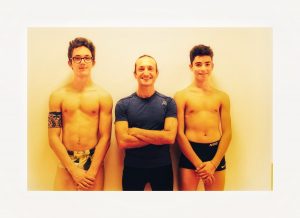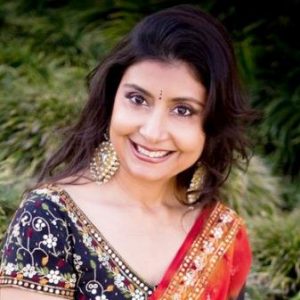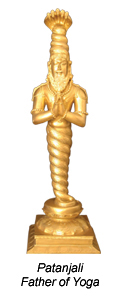The different Yoga styles most practiced in the West
Traditional vs Modern Yoga – To better understand the difference between traditional and modern yoga practices, it is best to compare them next to each other. It can be said, however, that the eastern philosophy of yoga follows the traditional teachings of the practice. Meanwhile, western practitioners of yoga are more inclined towards the modern approach to yoga. The difference in approach used for each philosophy of yoga also impact the benefit that one can derive from yoga.
Eastern (Traditional View) of Yoga – The ultimate goal in practicing yoga in the east is to attain self-realisation, which is considered as the highest possible level of consciousness that one can achieve. According to yogic experts, an individual who has reached this stage of human consciousness creates a union with a Divine Power. This is then useful in one’s spiritual progress, according to the teachings of yoga in the east.
Over the years, many styles of yoga have developed and today many people do not know what type of yoga they are practicing. While Yoga is a religion to many, most practitioners in the west separate yoga from its spiritual goal, seeing yoga strictly as an exercise/fitness regimen, or an overall program of keeping physical and emotional wellbeing.
In the West, followers of yoga have taken a less spiritual approach, the word “yoga” is synonymous with stretching, flexibility and physical fitness. Although yoga stretches comprise just a small part of the yoga philosophy, this aspect of yoga has exploded in popularity throughout the world. Many schools focus on the physical fitness of the yogi and have developed a wide variety of yoga styles. In the West, the most popular styles of yoga are Hatha, Ashtanga, Bikram, and Kundalini – although many other types exist as well.
Hatha Yoga – Hatha yoga, the style of yoga predominantly found in the West, actually refers to any physical yoga practice (there are several branches of yoga which do not involve any stretching at all). Most modern schools of yoga arose from this traditional form – yoga styles such as Kundalini and Ashtanga are merely styles of Hatha yoga. In the West, a studio may offer a “Hatha yoga class” – such a class will focus on traditional yoga poses, or asanas, as well as a few breathing exercises. Beginners and experts alike do well in such classes as the practitioner generally chooses the pace.
Ashtanga – Based on the teachings of the Master Yogi Shri Pattabhi Jois (Guruji) Ashtanga yoga is a flowing style of yoga that is more rigorous than the Hatha style. Although all styles of yoga focus on the breath, Ashtangis move through a series of poses so that each movement takes one breath. This breath-synchronized movement is called a vinyasa and Ashtangis can move through their poses quite fast. The Ashtanga Yoga Institute explains on its website that working up a sweat is very important to this type of yoga as sweating helps remove toxins and purify the body. The rapid flowing movements also help with blood circulation.
Integral – Integral yoga follows the teachings of Sri Swami Sachidananda, who came to the U.S. in the 1960s and eventually founded many Integral Yoga Institutes and the famed Yogaville Ashram in Virginia. Integral is a gentle hatha practice, and classes often also include breathing exercises, chanting, kriyas, and meditation.
Ananda Yoga – Is a classical style of hatha yoga that uses asana and pranayama to awaken, experience, and begin to control the subtle energies within oneself, especially the energies of the chakras. Its object is to use those energies to harmonize body, mind, and emotions, and above all to lift oneself with higher levels of awareness. One unique feature of this system is the use of silent affirmations while in the asanas as a means of working more directly and consciously with the subtle energies to achieve this lift. Ananda Yoga is a relatively gentle, inward experience, not an athletic or aerobic practice. It was developed by Swami Kriyananda, a direct disciple of Paramhansa Yogananda and author of the spiritual classic, Autobiography of a Yogi.
Iyengar – Based on the teachings of the Master Yogi B.K.S Iyengar, this style of practice is most concerned with bodily alignment. In yoga, the word alignment is used to describe the precise way in which your body should be positioned in each pose in order to obtain the maximum benefits and avoid injury. Iyengar practice usually emphasizes holding poses over long periods versus moving quickly from one pose to the next (flow). Also, Iyengar practice encourages the use of props, such as yoga blankets, blocks and straps, in order to bring the body into alignment.
Sivananda – The first Sivananda Yoga Vedanta Center was founded in 1959 by Swami Vishnu-devananda, a disciple of Swami Sivananda. There are now close to 80 locations worldwide, including several ashram retreats. Sivananda yoga is based upon five principles: Proper exercise (Asana, focusing on 12 poses in particular); Proper breathing (Pranayama); Proper relaxation (Savasana); Proper diet (Vegetarian); Positive thinking (Vedanta) and meditation (Dhyana).
Vinyasa – Like Hatha, Vinyasa is a general term that is used to describe many different types of classes. Vinyasa, which means breath-synchronized movement, tends to be a more vigorous style based on the performance of a series of poses called Sun Salutations, in which movement is matched to the breath. A Vinyasa class will typically start with a number of Sun Salutations to warm up the body for more intense stretching that’s done at the end of class. This style is sometimes also called flow yoga, because of the smooth way that the poses run together and become like a dance. The breath becomes an important component because the teacher will instruct you to move from one pose to the next on an inhale or an exhale. Vinyasa is literally translated from Sanskrit as meaning “connection,”
Power Yoga – is a general term used in the West to describe a vigorous, fitness-based approach to vinyasa-style yoga. Though many consider it to be “gym yoga,” this style of practice was originally closely modeled on the Ashtanga method. The term came into common usage in the mid-1990s from USA born Bender Birchin, a qualified Ashtanga yoga teacher, to make Ashtanga yoga more accessible to western students, though, unlike Ashtanga, power yoga does not follow a set series of poses, so classes can vary widely. With its emphasis on strength and flexibility, power yoga brought yoga into the gyms of America, as people began to see yoga as a way to work out.
Hot Yoga – A common misconception is that Hot Yoga was devised by Bikram Choudhury. While Bikram Yoga is a type of Hot Yoga, this wonderful lineage originated from Calcutta. The pioneer of Hot Yoga was Bishnu Ghosh, an Indian doctor, a philosopher, as well as a great Hatha Yoga Master whom together with his brother Paramahansa Yogananda (author of Autobiography of a Yogi) in 1923, founded the Ghosh’s Yoga College. The brothers intended to offer a yoga in an environment that replicates the heat and humidity of India where yoga originated. His student, Bikram Choudhury, founder of Bikram Yoga, then brought this modality to the United States in 1970.


